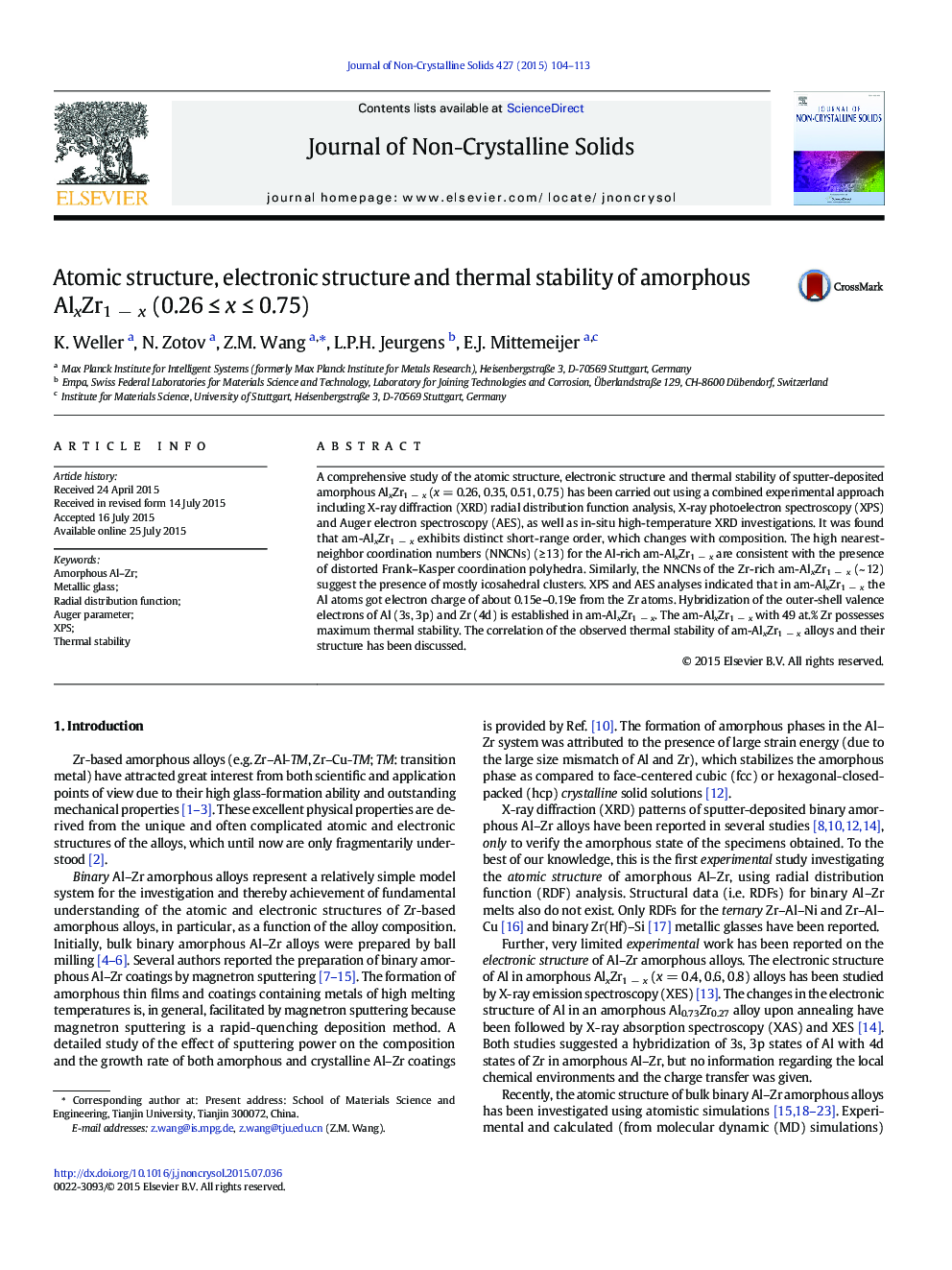| Article ID | Journal | Published Year | Pages | File Type |
|---|---|---|---|---|
| 1480671 | Journal of Non-Crystalline Solids | 2015 | 10 Pages |
•XRD radial distribution function analysis of am-AlxZr1 − x•Change of short-range and medium-range orders with composition•Electronic transfer from Zr to Al revealed by XPS/Auger analyses•Valence-band analysis of am-AlxZr1 − x by XPS•Correlation of the thermal stability of am-AlxZr1 − x alloys with their structure
A comprehensive study of the atomic structure, electronic structure and thermal stability of sputter-deposited amorphous AlxZr1 − x (x = 0.26, 0.35, 0.51, 0.75) has been carried out using a combined experimental approach including X-ray diffraction (XRD) radial distribution function analysis, X-ray photoelectron spectroscopy (XPS) and Auger electron spectroscopy (AES), as well as in-situ high-temperature XRD investigations. It was found that am-AlxZr1 − x exhibits distinct short-range order, which changes with composition. The high nearest-neighbor coordination numbers (NNCNs) (≥ 13) for the Al-rich am-AlxZr1 − x are consistent with the presence of distorted Frank–Kasper coordination polyhedra. Similarly, the NNCNs of the Zr-rich am-AlxZr1 − x (~ 12) suggest the presence of mostly icosahedral clusters. XPS and AES analyses indicated that in am-AlxZr1 − x the Al atoms got electron charge of about 0.15e–0.19e from the Zr atoms. Hybridization of the outer-shell valence electrons of Al (3s, 3p) and Zr (4d) is established in am-AlxZr1 − x. The am-AlxZr1 − x with 49 at.% Zr possesses maximum thermal stability. The correlation of the observed thermal stability of am-AlxZr1 − x alloys and their structure has been discussed.
